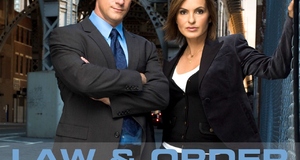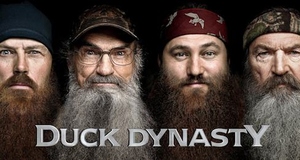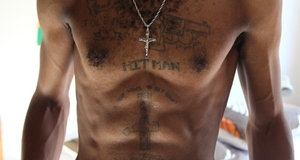In Treatment: The Casting and Bracketing of Repulsion in The SopranosJason Mittel argues, “Genres are not found within one isolated text. […] They emerge from the intertextual relations between multiple texts resulting in a common category.” (Mittel, 41). More simply, texts are produced and received as creations of intertextual relations. However, are these intertextual relations always reciprocal? Do all texts benefit from these interactions? If reciprocity does not characterize intertextuality, no common category can be formed, but a new singular TV genre may become an alternative. Therefore, if the hypothesis is that the intertextual relation between The Sopranos series and other texts is unilateral, the thesis is that The Sopranos belongs to a TV genre on its own, a genre created around it. Hence, synthesizing hypothesis and thesis means understanding the unilateral relationship that Chase’s series entertains with other texts. In other words, how does Chase repurpose other texts to carry out the “Sopranization?” “Sopranization”Chase converts characters, known for playing “good” and “bad” guys in other TV series and/or films, and provides them with a new image. By converting them, they become either “good,” “bad,” or even hybrids, in some cases. The dichotomy “good” versus “bad” that I use to explain how casting is one of the strategies that Chase exploits in The Sopranos can be translated as “lawful” versus “lawless.” Chase chooses both major and minor characters to induce the audience to feel familiar with faces previously seen in other major and minor TV or cinema roles, but at the same time he induces the audience to dissociate those faces from those roles that made these actor’s careers. In other words, despite the fact that the audience recognizes these faces, it hardly knows where to place them outside of the TV series because Chase encourages a bracketing of the audience’s knowledge. One of the most interesting conversions is Ralph “Ralphie” Cifaretto’s (Joe Pantoliano). Pantoliano has both a film and a TV career, even though the latter was less successful until he played in The Sopranos. Interestingly, he has consistently played both “good” and “bad” guys. He was criminal Francis Fratelli in the The Goonies (Richard Donner, 1985), FBI Captain Howard in Bad Boys (Michael Bay, 1995) and its sequel, Bad Boys II (Michael Bay, 2003), Deputy Marshal Cosmo Renfro in U.S. Marshals (Stuart Baird, 1998), and evil doppelganger Cypher in The Matrix (Andy & Lana Wachowski, 1999), just to mention a few. These iconic film roles guaranteed the audience’s familiarity with his face, but only after Chase casted him as Ralphie, the face of the psychotic murderer of the TV series became iconic too. The relationship between The Sopranos and the films in which Pantoliano played is obvious, but the intertextuality is unilateral. In fact, retroactively, when the audience watched the above-mentioned films after Tony killed Ralphie, or watches those films now, it likely remembered or remembers Ralph, the character, rather than the actor’s name because at that point Pantoliano had been “Sopranized.”The same conversion that demonstrates the unilateral relationship between the series with other texts and media concerned John Heard. Before 1999, Heard was known for his fatherly role in family comedies. He played the minor role of Paul in Big (Penny Marshall, 1988) Peter McCallister in Home Alone (Chris Columbus, 1990) and its sequel Home Alone 2: Lost in New York (Chris Columbus, 1992), Paul Vereek, Special Counsel to the FBI in The Pelican Brief (Alan J. Pakula, 1993) along with many other “good” roles. In Chase’s TV series Heard is Detective Vin Makazian. He played the role of the bribed cop in Meadowlands (John Patterson, 1999), Pax Soprana (Alan Tayor, 1999), Boca (Andy Wolk, 1999), Nobody Knows Anything (Henry J. Bronchtein, 1999), and The Test Dream (Allen Coulter, 2004). He represented the law, but he repeatedly broke it becoming Tony’s police informer. He did the dirty work for Tony, such as spying Dr. Melfi and collecting information about her private life.6 John Heard is a convincing example of how Chase “Sopranized” a familiar “good” face into a “bad” one disorienting the audience’s knowledge of an actor’s appearance. Heard was not goofy Peter McCallister anymore. He had become the dishonored official, gambler, and frequent client of brothels, with no life outside of his job. Other artists and actors became “victims” of “Sopranization.” During his rock music career, as bassist of Bruce Springsteen’s E Street Band (1975-1984), Steve Van Zandt made a name for himself, but the role of Silvio Dante became a turning point for him. In Van Zandt’s case, the “Sopranization” is of a different nature. He was not a film or a TV face yet. He was known on concert stages. Mostly, rock fans recognized his rocker look. He used to wear a leather outfits and a black bandana in every public appearance. Needless to say, Chase played with his image. Ultimately, broad-shoulder suits and plastered brown-dyed hairstyle, and a grim expression became Silvio’s trademarks. At that point, Steve Van Zandt was “Sopranized” as well. The same argument is valid for Lorraine Bracco who played Karen Hill in Goodfellas. Bracco and Karen Hill are Dr. Melfi, still. Before 1999, Michael Imperioli played the minor role of boy Spider in Goodfellas, Jojo in Bad Boy--Pantoliano’s part in the same film is significant. Imperioli is Johnny Stivers and Detective Nick Falco respectively before and after being casted as Christopher Moltisanti. He played Stivers in Atonement (Martha Mitchell, 1996) and Falco in Publish and Perish (Constantine Makris, 2005), Sports of Kings (Michael Pressman, 2005), In God We Trust (David Platt, 2005), Locomotion (Unknown, 2005), and Hindsight (Jean de Segonzac, 2006), all episodes of NBC Law and Order (1990-2010). Similarly, Tony Sirico, a mobster in real life, played extra in The Godfather: Part II (1974), Tony Stacks in Goodfellas, an escaped convict in Everyone Says I Love you (Woody Allen, 1996), Toy Torillo in Copland (James Mangold, 1997), and First Risolli Man in mob comedy Mickey Blue Eyes (Kelly Makin, 1999). After all these and other minor roles, in 1999 Sirico’s name was consecrated and “Sopranized,” as Paulie ‘Walnuts’ Gualtieri. Chase repeatedly repurposed Robert Loggia, actor who played in series that Chase directed at the beginning of his career in television. In The Sopranos, Loggia plays Feech Lamanna, a minor character in the episodes, Two Tonys (Tim Van Patten, 2004), Rat Pack (Alan Taylor, 2004), Where’s Johnny? (John Patterson, 2004), and All Happy Families (Rodrigo Garcia, 2004). His TV and film career is one of the most successful and enduring in The Sopranos cast. He played Larry Chetnick in The Money (1960), Jimmy French in The Case of M.J.H. (1962), ‘Driver’ Arthur in You’ll Be the Death of Me (1963), and Richard Schasak in The World’s Oldest Motive (1965), four episodes of Alfred Hitchcock Presents, classic TV series and probable inspiration of the irresolvable enigmas in suspension, which characterize The Sopranos’s narrative. Yet, more importantly, Loggia impersonated Dominic Marcon in Drought at Indianhead River (Lawrence Doheny, 1976), Manny Arturis in Beamer’s Last Case (Stephen J. Cannell, 1977), and Dr. Russell Nevitt in Rosendahl and Gild Stern Are Dead (William Wiard, 1978), all three episodes of The Rockford Files produced by Chase and connected to the Mob world. Loggia is the “good” guy who keeps turning into a “bad” one and vice versa in a different episode or TV series. In A Very Happy Ending (Thmas Rickman, 1986) episode of NBC The New Alfred Hitchcock Present (1985-1988), Loggia performed Charley--the hybrid--the “good” and “bad” guy at the same time.7 I focused on Loggia in particular because, before the success of The Sopranos, his TV career crossed Chase’s path quite often. Loggia as well was a repurposed actor, but he never fully converted to “Sopranization.” He remained a hybrid character. However, he could be considered the prelude to the repurposing of Chase’s past professional experience as part of the “Sopranization” conversion and the formation of The Sopranos TV genre. Between 1976 and 1979, David Chase directed twenty episodes of NBC The Rockford Files (1974-1980). “‘Rockford was TV’s first postmodern, ironic detective,’ Chases says. ‘He took all of the private eye clichés, dismantled and then reassembled them.’” (Martin, 9) In the 1970s, this TV series was a novelty, like The Sopranos was at the turn of the twenty-first century. The Rockford Files was a revision of the typical detective series and the detective himself for prime time (Johnson, 19) Like Tony, the Mafia boss with a new atypical image, “Jim Rockford [James Garner] was both macho and sensitive, hardworking and hedonistic, stressed and successful”--not to mention an ex-convict (Gross, 30) There is no evidence that the character of Jim Rockford inspired Chase to create the character of Tony Soprano, especially because Rockford was not one of Chase’s “creatures”--Stephen J. Cannel and Roy Huggins were Jim Rockford’s “fathers.” However, the similarities between the two antiheros are undeniable. Both characters represent the indeterminate “postmodern everyman.” (Hall, 133) In addition both series are “adventures in the singular,” the adventures of a multifaceted single man in search of answers. Despite the similarities between the two major male characters of the series, I am not arguing that The Rockford Files is a TV genre of its own. The Rockford Files remains a revision of the detective series that just like Loggia soon became a hybrid. Thirty years later, Chase could not and did not try to revise the gangster TV series, and not simply because such a TV genre does not exist, but because he wanted to elaborate a new formula of dramatic entertainment in which he never asked the audience to encode any meaning. He had created The Sopranos TV genre freed from common and hegemonic codes and stereotypes, whose magic word was decodification. “De-Sopranization” and the Repurposing of The Sopranos“Fuckin’ Espresso, Cappuccino. We invented this shit and all these other cocksuckers are getting rich off of it,” Paulie thunders against those who profit from a unique Italian product, like coffee, and the traditional ways of making it while waiting for Big “Pussy” (Vincent Pastore) in a coffee shop. Then, angrily, he grabs a coffeemaker and swiftly leaves the store.8 Paulie’s impulsive reaction is significant because it foretells how after 2007 “The Sopranos Syndrome” continued, but in a different form (Quinn, 167). Similar to Chase, many writers and directors repurposed The Sopranos to create new successful TV series on cable television networks. I emphasize that the successful repurposing of the TV series had to happen after 2007 because any attempt to “exploit” Chase’s work before the end of The Sopranos miserably fail. The most notable example is the mob series Falcone, which lasted only one season.9 CBS conceived it as a text of viability. The series aired its sole nine episodes every night (April 4th-12th, 2000) after the finale of the second season of The Sopranos on April 9th, 2000 (Huff) The series shot in New York was based on the true story of Joseph Dominick Pistone--alias Joe Falcone--an undercover FBI agent who infiltrated some of the most famous Mafia crime families dismantling parts of their hierarchy and organized criminal activities. But why did Falcone fail? The joint theory is that The Sopranos throttled the CBS series, even though the television network could count on a larger audience. Falcone “proved too tame in contrast to the darkly funny, profane, and complex HBO show.” (Weinraub). “The reviews for the show were mixed, comparing it negatively to The Sopranos, but also raising questions about whether Falcone broke any new ground in the Mafia genre.”Continued on Next Page » Suggested Reading from Inquiries Journal
Inquiries Journal provides undergraduate and graduate students around the world a platform for the wide dissemination of academic work over a range of core disciplines. Representing the work of students from hundreds of institutions around the globe, Inquiries Journal's large database of academic articles is completely free. Learn more | Blog | Submit Latest in Film & Media |


















